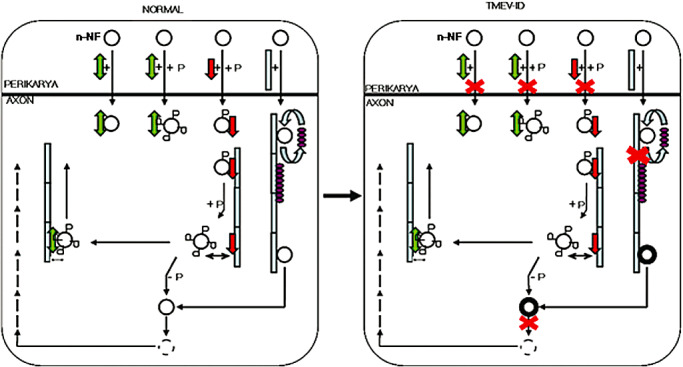Figure 8.

Schematic outline of the impact of the direct factors involved in alterations of neurofilament (NF) metabolism during Theiler's murine encephalomyelitis. The figure shows perikaryon‐axonal transport of neurofilaments and associated proteins. In normal animals, dynein is essential for the antero‐ and retrograde transport of non‐ and phosphorylated NFs whereas, kinesin is responsible for the anterograde transport of low phosphorylated NF. There is a continuous exchange between tau‐1 and n‐NF attached to microtubules. In axons, the phosphorylated NFs are dephosphorylated and then degraded. Following TME virus infection, impairment of these processes (marked with red crosses) that give rise to NF axonal aggregations can be observed. Non‐phosphorylated neurofilaments (○); phosphorylated neurofilaments ( ); kinesin (
); kinesin ( ); dynein (
); dynein ( ); microtubules‐MT‐ (
); microtubules‐MT‐ ( ); tau (
); tau ( ).
).
